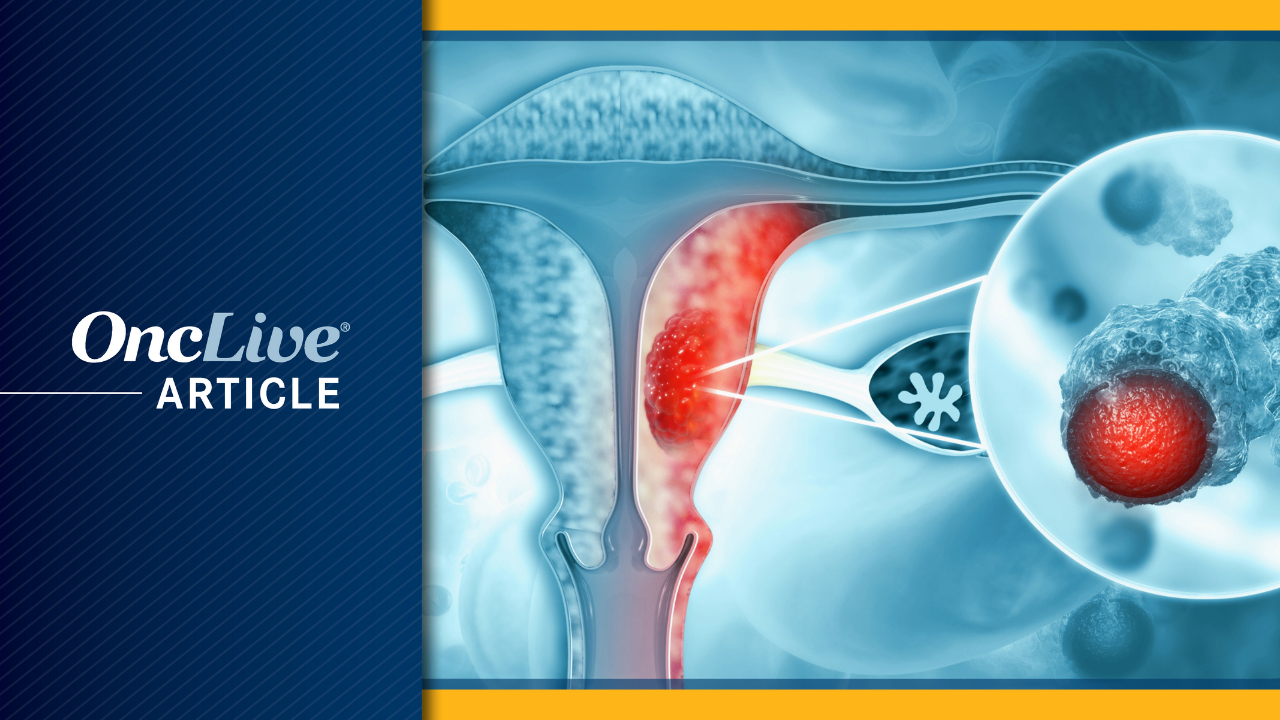Findings from a recent biomarker analysis of the phase 3 AtTEnd trial revealed that high whole-exome sequencing (WES) aneuploidy scores (W-AS) are associated with poorer outcomes when adding atezolizumab (Tecentriq) to chemotherapy in patients with mismatch repair–deficient (dMMR) advanced or recurrent endometrial cancer. Data presented at the 2025 ESMO Congress highlighted significant disparities in treatment responses based on W-AS levels.
Within the dMMR population evaluated in the study (n = 110), 90.9% of patients exhibited low W-AS, while only 9.1% had high W-AS. In the atezolizumab treatment group (n = 40), these figures shifted to 85.0% for low W-AS and 15.0% for high W-AS. Conversely, in the placebo group (n = 70), 94.3% of patients had low W-AS, with 5.7% classified as high W-AS.
An analysis of progression-free survival (PFS) outcomes demonstrated a stark contrast between the two W-AS subgroups treated with atezolizumab and chemotherapy. Patients with low W-AS (n = 66) achieved a median PFS that was not evaluable (NE; 95% CI, 17.2-NE), compared to 7.1 months (95% CI, 6.2-10.1) for those receiving placebo plus chemotherapy (n = 34; HR, 0.28; 95% CI, 0.16-0.47; log-rank P < .0001). In the high W-AS group, the median PFS was notably lower at 4.2 months (95% CI, 1.9-6.5) for the atezolizumab arm (n = 4), versus 7.0 months (95% CI, 4.6-NE) in the placebo arm (n = 6; HR, 3.60; 95% CI, 0.71-18.29; log-rank P = .1006).
In terms of overall survival (OS), patients with low W-AS in the atezolizumab group had a median OS that was NE (95% CI, NE-NE), while those in the placebo group had a median OS of 37.2 months (95% CI, 10.1-NE) (HR, 0.40; 95% CI, 0.21-0.77; log-rank P = .0043). For the high W-AS subgroup, the median OS was 11.2 months (95% CI, 3.0-60.9) with atezolizumab, compared to 31.8 months (95% CI, 8.9-NE) with placebo (HR, 1.36; 95% CI, 0.25-7.55; log-rank P = .7238).
Dr. Luca Mazzarella, the lead author of the study from DIMA, IEO IRCCS in Milan, Italy, stated, “The W-AS may actually identify approximately 10% of patients with dMMR endometrial cancer who do not benefit from the addition of immunotherapy to chemotherapy.” He emphasized that these results are preliminary, as the study’s population size is limited, and further validation in larger cohorts is necessary.
The AtTEnd trial was a multicenter, double-blind, randomized, placebo-controlled study that enrolled patients aged 18 years or older with advanced or recurrent endometrial carcinoma or carcinosarcoma, regardless of their MMR status. Patients were randomly assigned in a 2:1 ratio to receive atezolizumab plus carboplatin at an area under the curve of 5 or 6 and paclitaxel at 175 mg/m² on day 1 of each three-week cycle for a total of six to eight cycles. Treatment with atezolizumab continued until disease progression.
Previous findings from the trial indicated that at a median follow-up of 28.3 months (IQR, 21.2-37.6), patients in the atezolizumab group (n = 362) achieved a median PFS that was not reached (95% CI, 12.4-NE), compared to 6.9 months (95% CI, 6.3-10.1) for those receiving placebo plus chemotherapy (n = 189; HR, 0.36; 95% CI, 0.23-0.57; P = .0005).
Researchers collected a total of 234 samples for WES analysis, including 110 of the 125 possible samples from patients with dMMR tumors (88%). Additionally, samples were gathered from 121 of 409 patients with non-dMMR tumors, and further analysis is ongoing in this group. The study also examined genes associated with endometrial cancer from all collected samples, identifying common genes such as PTEN (63%), TP53 (35%), MSH6 (11%), and BRCA2 (8%).
A noteworthy finding included a POLE mutation observed in only one patient (0.4%). Among the dMMR samples, 20.9% harbored CTNNB1 and/or APC mutations, which were associated with worse PFS (HR, 1.91; 95% CI, 1.10-3.33; P = .0201). Furthermore, MSH3 and/or MSH6 mutations occurred in 26.4% of dMMR samples.
While researchers did not provide detailed biomarker data for the non-dMMR population during the presentation, they noted that across both arms (n = 121), 47.1% of patients had low W-AS, compared to 52.9% with high W-AS. In the atezolizumab arm (n = 80), the rates were 58.5% for low W-AS and 41.5% for high W-AS. The placebo arm showed 41.3% with low W-AS and 58.7% with high W-AS.
In light of these findings, the ongoing analysis and validation of W-AS as a prognostic tool in dMMR endometrial cancer could significantly influence treatment decisions and patient outcomes in future clinical practice.
